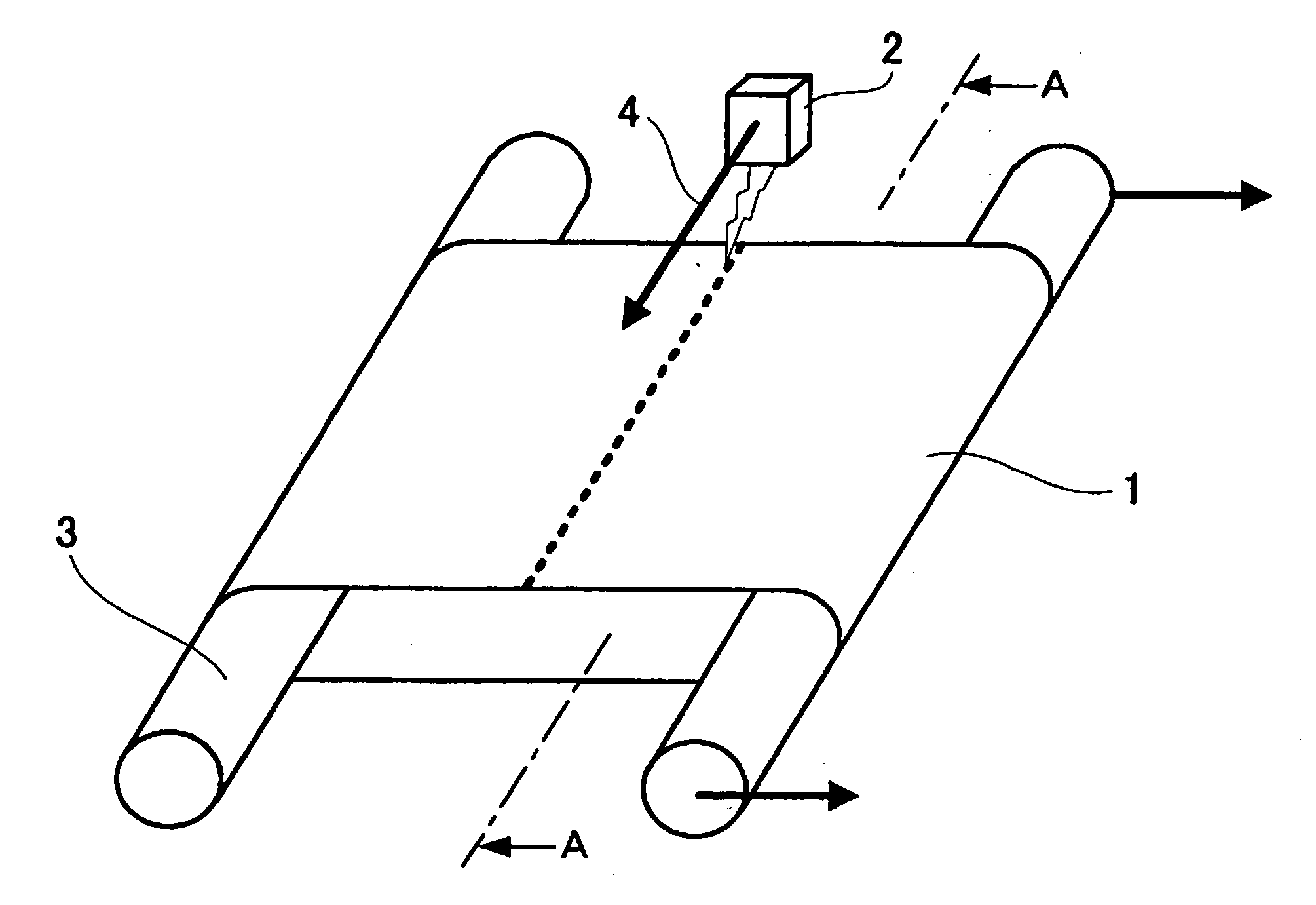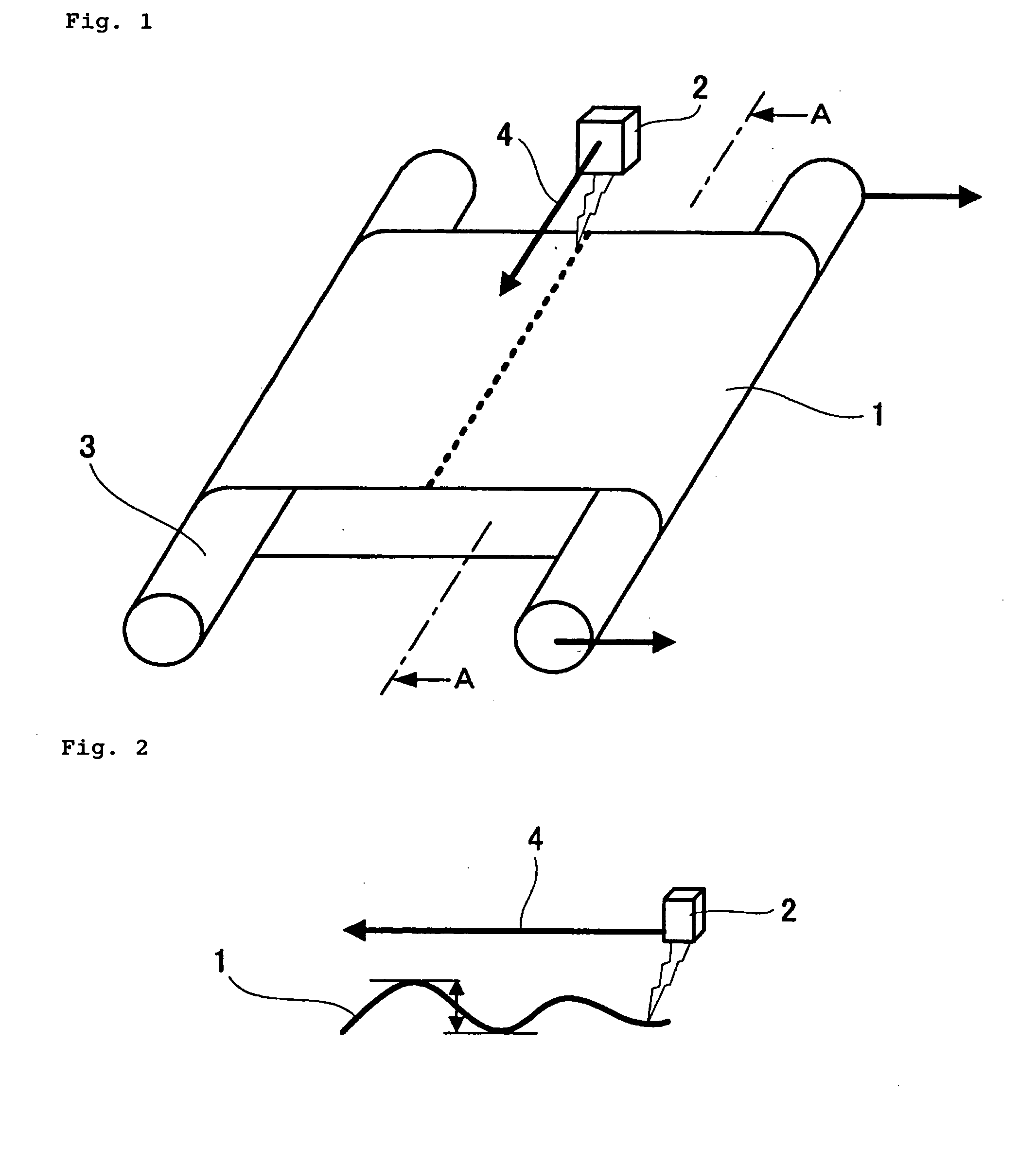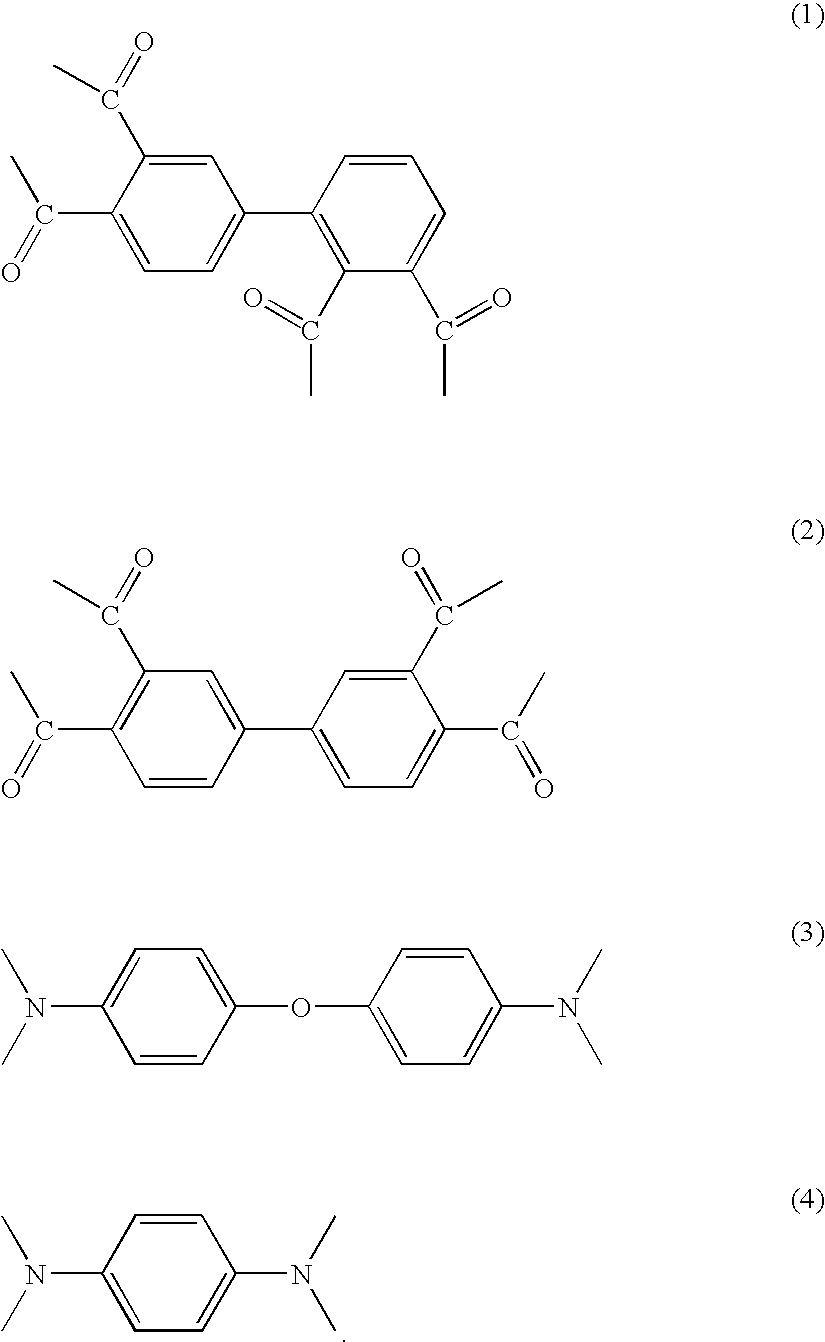Polyamic acid solution composition having carbon black dispersed therein, process for production of semiconductive polyimide resin belt using the composition, and semiconductive polyimide resin belt
a technology of carbon black and polyamic acid solution, which is applied in the direction of tyre parts, non-conductive materials with dispersed conductive materials, synthetic resin layered products, etc., can solve the problems of inability to easily grind carbon black, inability to easily molded into thick belts with such low solids content, and inability to increase the concentration of carbon black, etc., to achieve the effect of improving the affinity for polyimide resin, reducing the adverse dispersion of carbon black
- Summary
- Abstract
- Description
- Claims
- Application Information
AI Technical Summary
Benefits of technology
Problems solved by technology
Method used
Image
Examples
example 1
Preparation of a Carbon Black-Dispersed Polyamic Acid Solution Composition
[0095]5 kg of a polyamic acid solution (having a logarithmic viscosity of about 0.4) was prepared by a synthesis of 30 mol % 2,3,3′,4′-biphenyltetracarboxylic dianhydride and 70 mol % 3,3′,4,4′-biphenyltetracarboxylic dianhydride per total biphenyltetracarboxylic dianhydride components, and 20 mol % 4,4′-diaminodiphenyl ether and 80 mol % p-phenylenediamine per total aromatic diamine components in an NMP. The polyamic acid solution had a viscosity of 10 Pa·s (30° C.), and a solids content of 25 weight %.
[0096]0.38 kg of oil-furnace carbon black (CB1, pH: 2.3, volatile matter content: 3.3 weight %, nitrogen adsorption specific surface area: 110 m2 / g, DBP absorption: 65 ml / 100 g, amount of extracted undecomposed feedstock hydrocarbon (PAH): 1.5 ppm) and 1.1 kg of NMP were added to the thus-obtained solution, and the carbon black was uniformly dispersed therein using a ball mill, obtaining a carbon black-disperse...
example 2
Preparation of a Carbon Black-Dispersed Polyamic Acid Solution Composition
[0099]5 kg of a polyamic acid solution (having a logarithmic viscosity of about 0.32) was prepared by a synthesis of 20 mol % 2,3,3′,4′-biphenyltetracarboxylic dianhydride and 80 mol % 3,3′,4,4′-biphenyltetracarboxylic dianhydride per total biphenyltetracarboxylic dianhydride components, and 50 mol % 4,4′-diaminodiphenyl ether and 50 mol % p-phenylenediamine per total aromatic diamine components in an NMP. The polyamic acid solution had a viscosity of 25 Pa·s (30° C.), and a solids content of 30 weight %.
[0100]0.5 kg of CB1, which was the same as that used in Example 1, and 1.5 kg of NMP were added to the thus-obtained solution, and the carbon black was uniformly dispersed therein using a ball mill, obtaining a liquid feedstock B. Liquid feedstock B had a nonvolatile matter content of 28.6 weight %, wherein the content of carbon black was 25 weight % per total weight of nonvolatile matter. Liquid feedstock B h...
example 3
Preparation of a Carbon Black-Dispersed Polyamic Acid Solution Composition
[0102]5 kg of a polyamic acid solution (having a logarithmic viscosity of about 0.25) was prepared by a synthesis of 20 mol % 2,3,3′,4′-biphenyltetracarboxylic dianhydride and 80 mol % 3,3′,4,4′-biphenyltetracarboxylic dianhydride per total biphenyltetracarboxylic dianhydride components, and 75 mol % 4,4′-diaminodiphenyl ether and 25 mol % p-phenylenediamine per total aromatic diamine components in an NMP. The polyamic acid solution had a viscosity of 25 Pa·s, and a solids content of 32 weight %.
[0103]0.38 kg of oil-furnace carbon black (CB2, pH: 4.1, volatile matter content: 2.3 weight %, nitrogen adsorption specific surface area: 125 m2 / g, DBP absorption: 85 ml / 100 g, amount of extracted undecomposed feedstock hydrocarbon (PAH): 0.9 ppm) and 1.5 kg of NMP were added to the thus-obtained solution, and the carbon black was uniformly dispersed therein using a ball mill, obtaining a liquid feedstock C. Liquid fe...
PUM
| Property | Measurement | Unit |
|---|---|---|
| mol % | aaaaa | aaaaa |
| mol % | aaaaa | aaaaa |
| nitrogen adsorption specific surface area | aaaaa | aaaaa |
Abstract
Description
Claims
Application Information
 Login to View More
Login to View More - R&D
- Intellectual Property
- Life Sciences
- Materials
- Tech Scout
- Unparalleled Data Quality
- Higher Quality Content
- 60% Fewer Hallucinations
Browse by: Latest US Patents, China's latest patents, Technical Efficacy Thesaurus, Application Domain, Technology Topic, Popular Technical Reports.
© 2025 PatSnap. All rights reserved.Legal|Privacy policy|Modern Slavery Act Transparency Statement|Sitemap|About US| Contact US: help@patsnap.com



